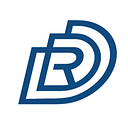Fulfilling Web3 Potential with DREP Self-Sovereign Identity System
Since Jack Dorsey’s announcement of Web5 on Twitter, it has been a source of constant enlightenment for Web3 developers, and the path of Web3 further advancement has been vaguely shaped — DID, one of the core pillars underlying Web5, is booming quietly and changing current Web3 each passing day.
DID-Empowered Innovations Taking the Identity World by Storm
Worldcoin
Following OpenAI, Sam Altman again makes himself a pioneer in web world by introducing Worldcoin to the Crypto world, which, together with World App and World ID, can be foreseen to disrupt the future encryption industry and even change people’s lifestyle. The project has till now accumulated near 1.7m users and the number keeps growing rapidly and stably. Such growth brings Webs close to mass user adoption, gaining Web3 more weight on the scale.
A Catalyzer of DID in Web3
DID’s power has penetrated into one of the Web3’s central components, DeFi, such as the fad of DID in SocialFi. Though it’s already a giant leap from web2 to web3, in which socialization participants are allowed the full rein of User-Generated Content (UGC), and are able to live on such a model. However, users still face disadvantages like redundant signing-up process, fragmented data silos, for which DID is not only the solution, but can also bring to users better online social experience.
What on earth is DID? How come it means so much in Web3?
According to TBD’s definition, “A Decentralized Identifier (DID) is an address representing who you are on the decentralized web. It can point to a person, organization, thing, data model, or abstract entity. It’s through your DID that others can exchange and store information, and be granted and grant access to others.” DID holders are expected to be able to keep their data in sync across ideally all platforms and Dapps, and give informed consent at the time of data collection.
Although a DID text string is normally composed of three parts, that is the URI scheme identifier, the identifier for the DID Method and the DID Method-Specific Identifier, the idea behind it is significant.
Such a sequence of text is designed to return individuals and organizations full sovereignty of their data that have generally been held captive by centralized organizations in the past. With DID, it is at users’ discretion to decide what information to reveal.
Simply put, DID provides a privacy-secured, decentralized and verifiable way to prove one’s identity. It is a way out of the seemingly tricky dilemma between privacy and trust, both of which are the cornerstone of Web3.
DREP DID as A Service to Build Web3 Infrastructure
Orchestrate a DaaS Plan for Wide Adoption
Facing the ever-changing Web3, DREP as well perfects itself to keep pace with the advancement while leading the mainstream. DREP ID has been upgraded from the initial idea of a personhood-proof to an essential part of DREP ecosystem, which serves as an infrastructure for users to navigate Web3 and even Web5.
DREP ID meets “Verifiable Credentials” (VC) and “Decentralized Identifiers” (DID) W3C concepts. It will provide users with varying degrees of protection. For example, private information and cryptographically verifiable credentials can be stored on digital services. Thanks to Zero-Knowledge proofs, they can choose to reveal personal information on different occasions. Combined with DREP’s Reputation System, more frictionless user experience in Web3 world can be guaranteed.
By connecting DREP ID with other DREP products, DREP reaches its tentacles wider. For instance, LookFor, the NFT Aggregator which is undergoing major development by DREP team, will allow DREP DID holders better transaction experience and other services in the future. By this means, DREP encourages users to willingly behave responsibly and reliably in DREP ecosystem, bringing mutual benefits to all parties.
In the future, DREP envisioned more sectors to be explored:
- DREP DID in DeFi
When integrated with mechanism like a Credit System, DID will play a vital role in more Web3 sectors, especially in DeFi field. For instance, in the future stage of perfection, DID holders verified with high ‘credit score’ might access uncollateralized loan more easily.
- DREP DID with Wallet
In current web3, wallet acts as our passort to access platforms, only with limited functions in urgent need to be expanded. Combing DID with wallet could be an optimal solution that triples the utility of both.
Connecting wallet to DID can effectively loosen users’ burden to keep interminable private keys. More than that, as one DID can be connected with multiple wallets, each wallet could be designated to certain use to faciliate a seamless management process of different asset portfolios.
- DREP DID in Decentralized Society (DeSoc)
Since all users are anonymous in DeSoc, it is important to create and verify one’s social profile using VCs, SBT, etc. A DID to help manage these proofs could substantially simplify and gamify the socializing process.
One good example is DAO. Since the operation of DAO community can rely highly on voting, it is crucial to discern who is eligible to vote and whose voting matters more. And this will become realizable with DID.
Above anticipated usecases are nothing more than a small drop in the ocean of Web3. In the future, DREP will integrate a wider spectrum of services covering more sectors in crypto world, making DREP an essential infrastructure in Web3 and even Web5 and providing users with continually optimizing one-stop service.
For more information,
Website: https://www.drep.org/
Twitter: https://twitter.com/DrepOfficial
Telegram: https://t.me/drep_foundation
Telegram Ann: https://t.me/drep_foundation_announcements
